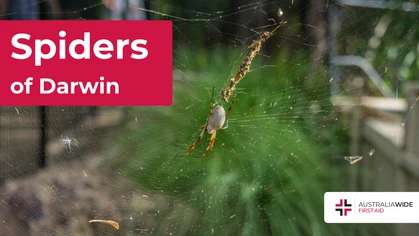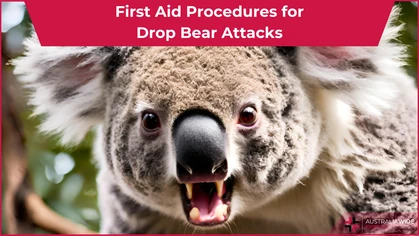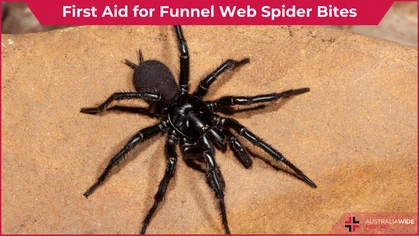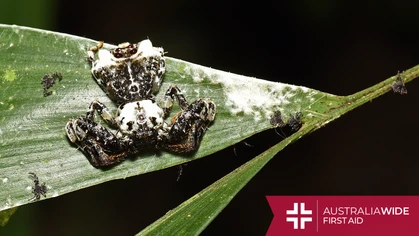Deadly Marine Life: The Bull Shark

Bites and Stings

Across film and television, the Great white shark has been touted as the most aggressive shark in the world. In reality, this title is better relegated to the ill-tempered Bull shark.
When it comes to shark attack fatalities, Australia is one of the deadliest locations in the world. Since 1900, 700 unprovoked shark attacks have been recorded in Australia, 170 of which resulted in fatalities. In 2020 alone, Australia recorded 8 shark attack fatalities, which accounted for more than 50% of the worldwide total. Likewise, 7 of these encounters were regarded as unprovoked. Though Australian waters are home to 12 shark species that are known for unprovoked attacks, only 3 of these species have been responsible for fatalities in the past 20 years – the Great white shark, the Tiger shark, and the Bull shark. Bull sharks, in particular, are widely considered to be the most dangerous sharks to humans – not only because of their aggressive tendencies, but because of their predilection for warm coastal waters and other high population areas. For this reason, we have collated this article to bolster your understanding of the Bull shark and the correct procedures for preventing and treating shark attacks.
Bull sharks are so named because of their short stout and angry demeanour. According to Sharksider, Bull sharks can have up to 350 teeth in their mouth at any given time.
Identification
The Bull shark, or Carcharhinus leucas has several distinguishing characteristics, the most notable of which is its short, blunt snout and high width-to-length ratio, which lends the shark an overall stout appearance. Female Bull sharks can grow up to approximately 3.3 metres or more in length, while males tend to max out at 2.1 metres. Both female and male Bull sharks exhibit countershading, in that the top of their body is grey while their underbelly is a pale white. Countershading is a camouflage mechanism, as it allows the shark to blend in with murky water when seen from above and to blend in with sunlit water when seen from below. Bull sharks also have small eyes, and adults typically weigh between 91 and 227 kilograms.Distribution and Habitat
Bull sharks are widely distributed and can be found in warm coastal marine and estuarine waters across the globe. In the United States, for instance, they can be found off the East Coast and in the Gulf of Mexico. In Australia, meanwhile, they can occur from south-western, Western Australia and across the northern and eastern coastlines all the way to the central coast of New South Wales. Bull sharks are also the only species of shark that is known to stay in freshwater for extended periods of time, as they have special glands and kidney functions that help their bodies retain salt. For this reason, Bull sharks have been known to use rivers and tributaries to travel far inland. In fact, they have been found deep in the Mississippi and Amazon Rivers, and there are thought to be upwards of 500 Bull sharks in the Brisbane River alone.Diet
Bull sharks are agile, solitary hunters that tend to head butt their prey before attacking, hence their name. Though they primarily feed on fish, including other sharks, they are not picky eaters and have been known to eat birds, turtles, dolphins, molluscs, echinoderms, and a host of other marine mammals and invertebrates. Bull sharks are also not averse to terrestrial mammals and have even been recorded eating members of their own species.Life History
Bull sharks tend to live for 12 to 16 years in the wild, though one in captivity was recorded to live to 30 years. As we mentioned earlier, Bull sharks are solitary creatures and generally only come together to mate. Females tend to give birth in the spring or summer to litters of between 1 to 13 pups. In warm climates, however, pups can be born year-round. The Bull shark’s conservation status is currently ‘Near Threatened’, as they are widely hunted for their fins, skin, and liver oil. Likewise, due to their predilection for coastal waters, they are particularly susceptible to threats from pollution and habitat degradation. Bull sharks are also sometimes unintentionally caught – in fact, though only a handful of people die from shark attacks each year, the commercial fishing industry is responsible for tens if not hundreds of millions of shark deaths across the same period.Danger to Humans
As we referenced earlier, Bull sharks are largely considered to be the most dangerous sharks to humans, and for several reasons. Firstly, they inhabit coastal waters and other areas where they are likely to encounter humans. And though Bull sharks are also renowned for their aggressive temperament, they also sometimes bite people inadvertently or out of curiosity, especially in opaque waters like estuaries and bays.How to Avoid a Shark Attack
There are several ways you can reduce your risk of a shark attack:- Swim in areas that are protected by shark nets and have lifeguards on duty. You should also swim with other people, but do not swim with pets or where people are fishing.
- Avoid entering the water when sharks are more active – for instance, at dawn, dusk, or night.
- Avoid entering murky water – as we mentioned earlier, Bull sharks have been known to use their mouths to discern nearby objects.
- Bull sharks have been known to bump their prey prior to attacking. As such, if you feel something nudge or brush past you in the water, make your way to the shore as quickly and calmly as possible and alert a lifeguard.
- If a shark heads straight for you, turn and face it while treading in a vertical formation. This will help distinguish you from the shark’s regular prey, such as seals, which typically swim horizontally.
- If a shark is intent on attacking you, you cannot turn and run. Instead, grab any available weapon, such as a paddle or diving knife, and strike at its eyes and gills. If no weapons are available, use your hands to instead gouge at the eyes and gills and to strike the shark in its snout.
First Aid for a Shark Attack
If you witness a shark attack, alert a lifeguard, make sure others are warned, and call Triple Zero (000) for an ambulance. If you need to rescue the person from the water, use a boat as soon as it is safe to do so. Do not put yourself at risk if no lifeguard or boat is available. Then:- If there is an arterial bleed – that is, blood is spurting from the inside thigh or upper arm or leg – apply pressure directly to the wound or improvise a tourniquet as necessary.
- Keep the person still and wrap them in towels to stave off the effects of shock.
Final Thoughts
Though the Great white shark has long been touted across film and television as the most dangerous shark in the world, the Bull shark is more deserving of this title. With their pugnacious nature and preference for densely populated coastal waters, Bull sharks can encounter humans with dire consequences. It is important to remember, however, that shark attacks (while terrifying) are relatively rare - in fact, you are more likely to die from a hornet, wasp, or bee sting than from a shark attack. Luckily, there are several ways you can reduce your risk of running into a Bull shark. There are also multiple avenues for fending off a Bull shark and treating any injuries you may sustain during an attack. To develop even more knowledge and skills to keep yourself safe in the water this summer, book a First Aid course with Australia Wide First Aid today.
Originally published at
https://www.australiawidefirstaid.com.au/resources/bull-shark
as part of the Australia Wide First Aid Articles Library









